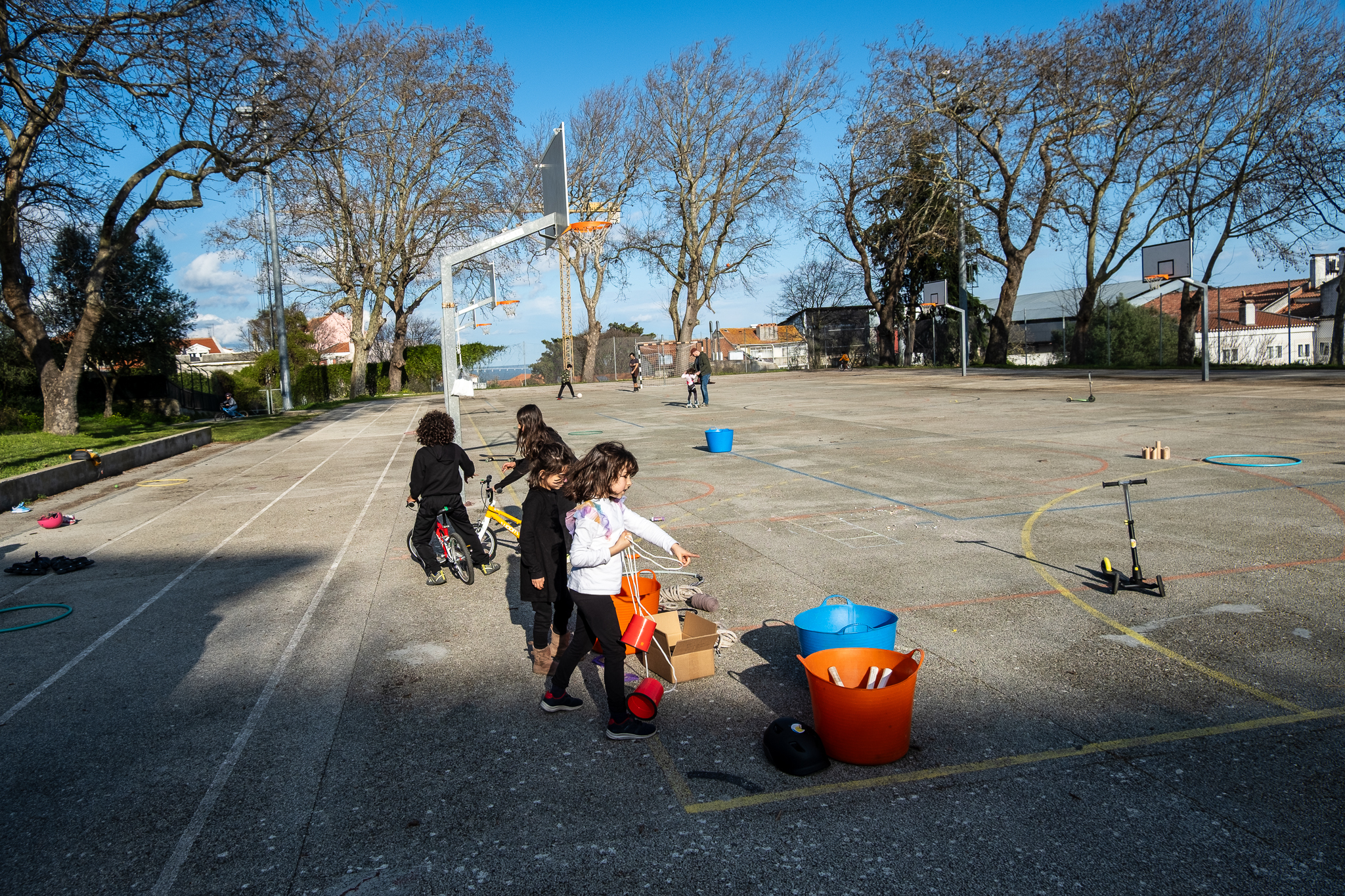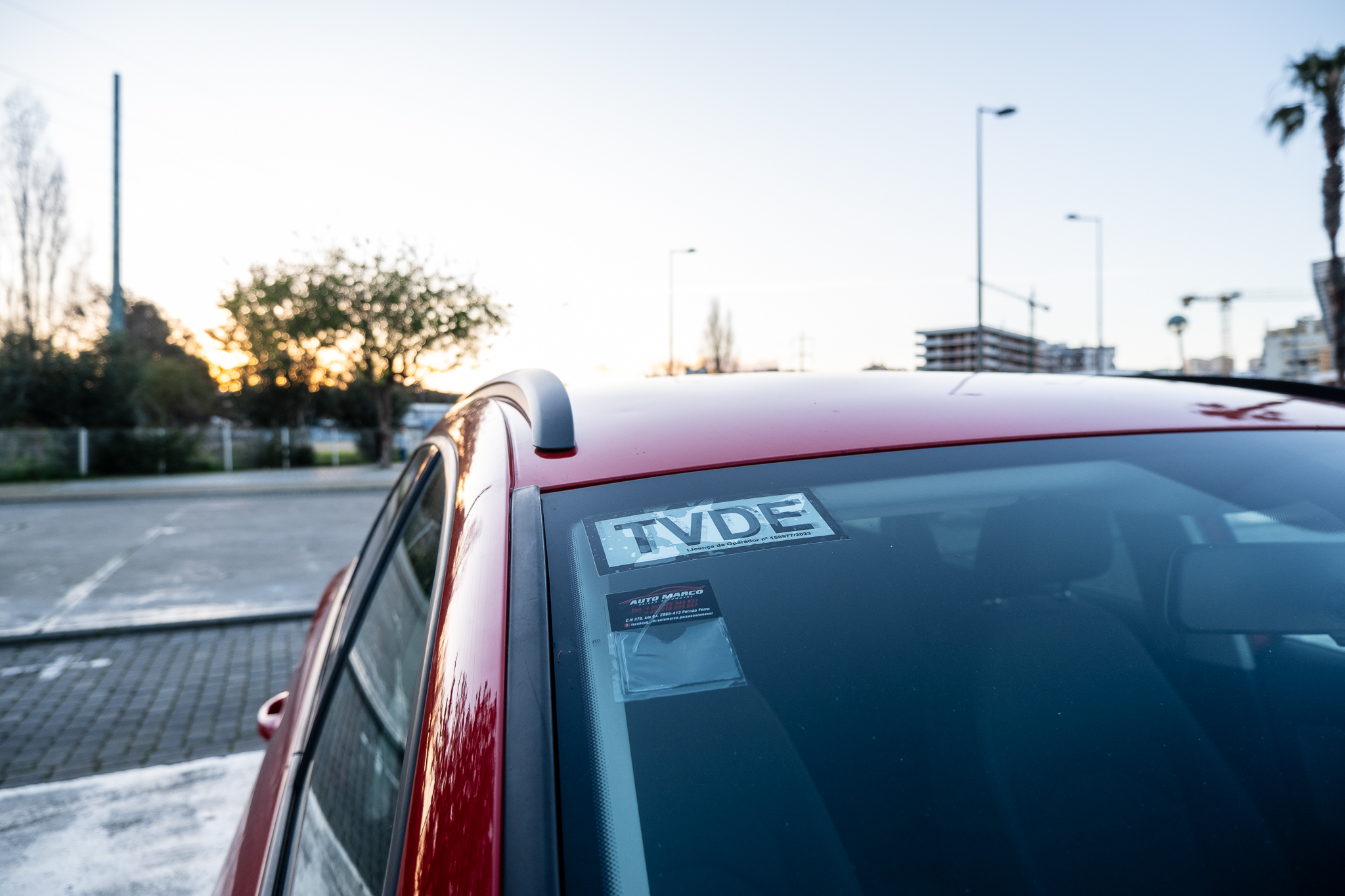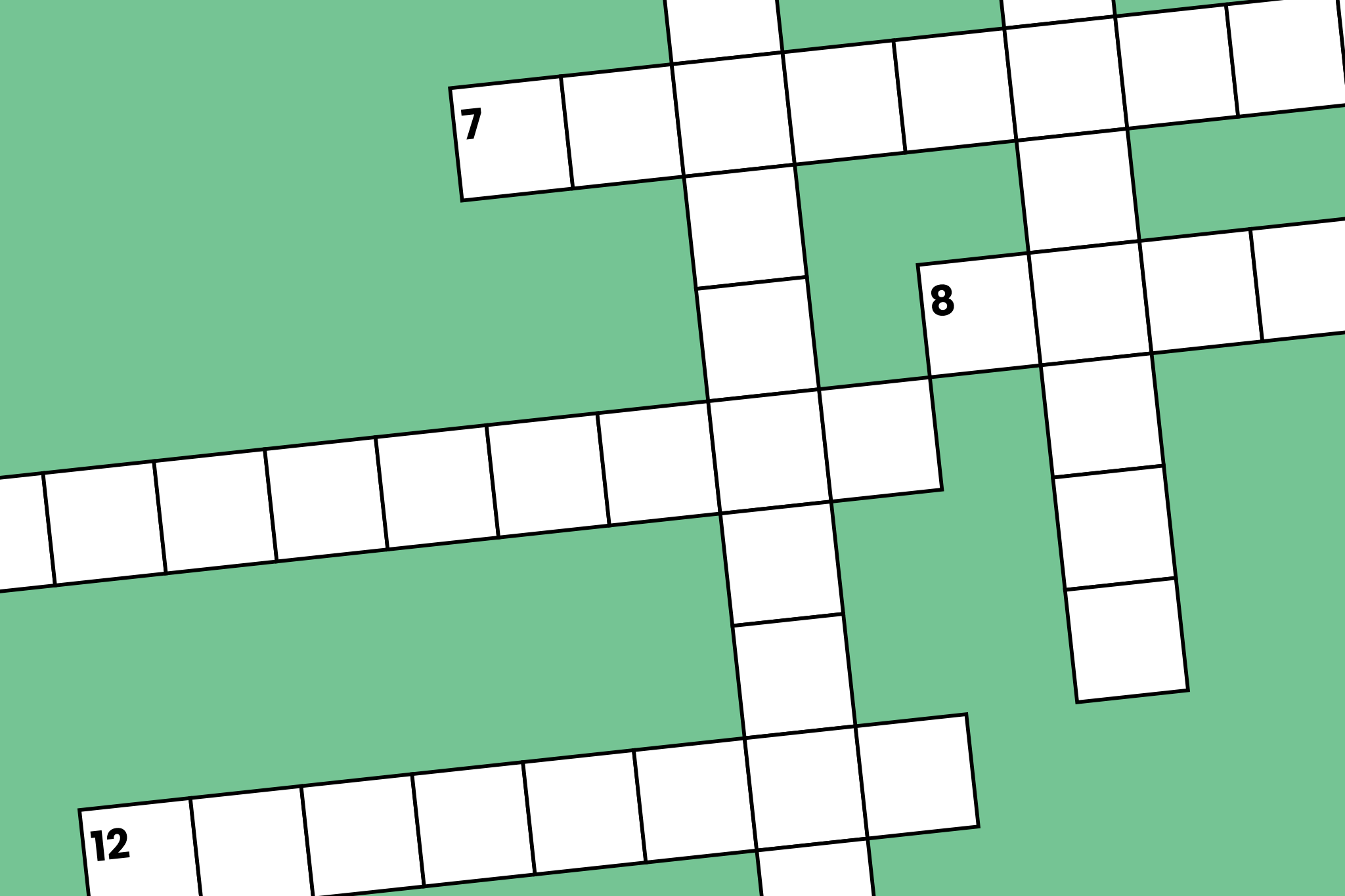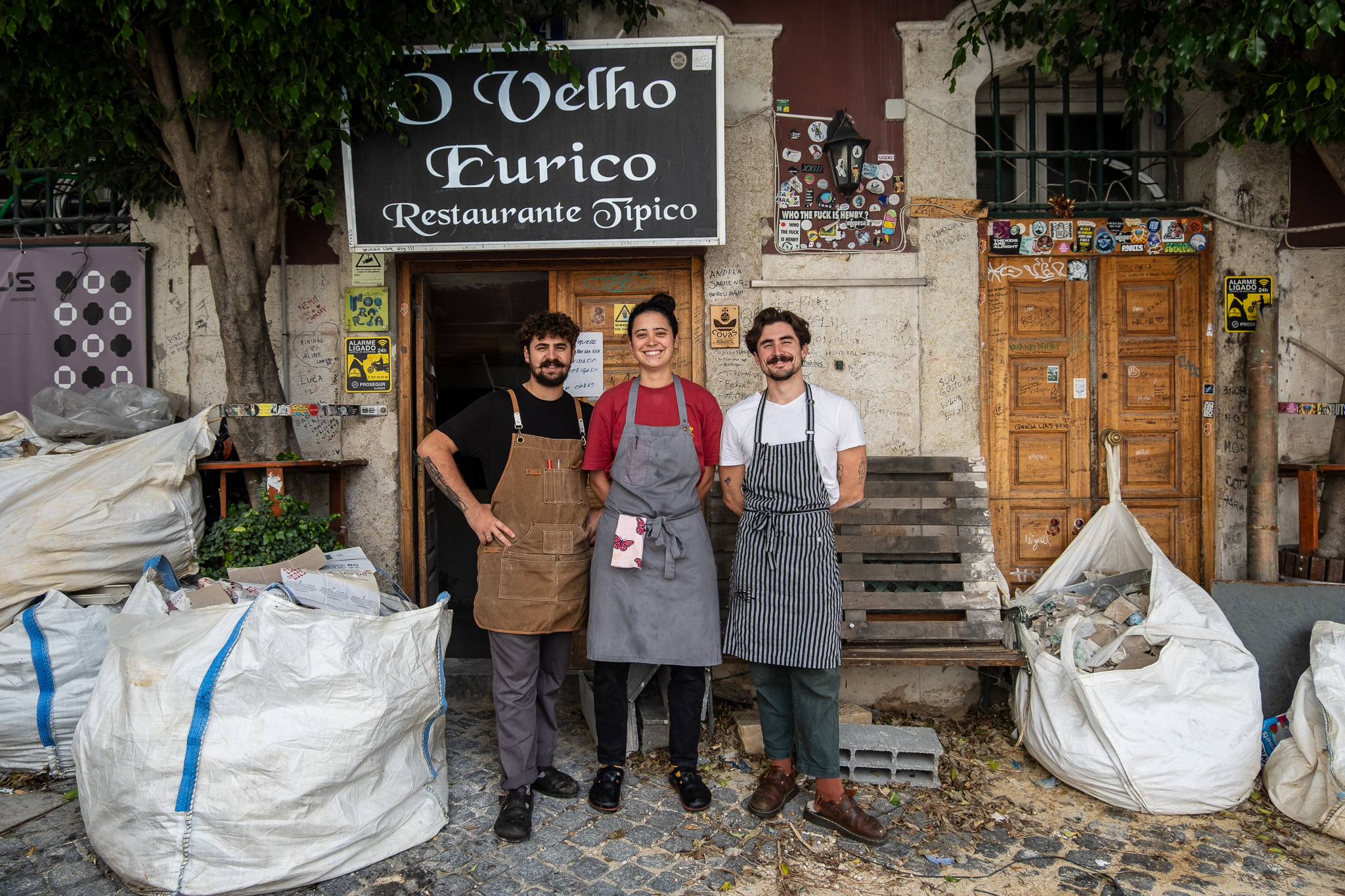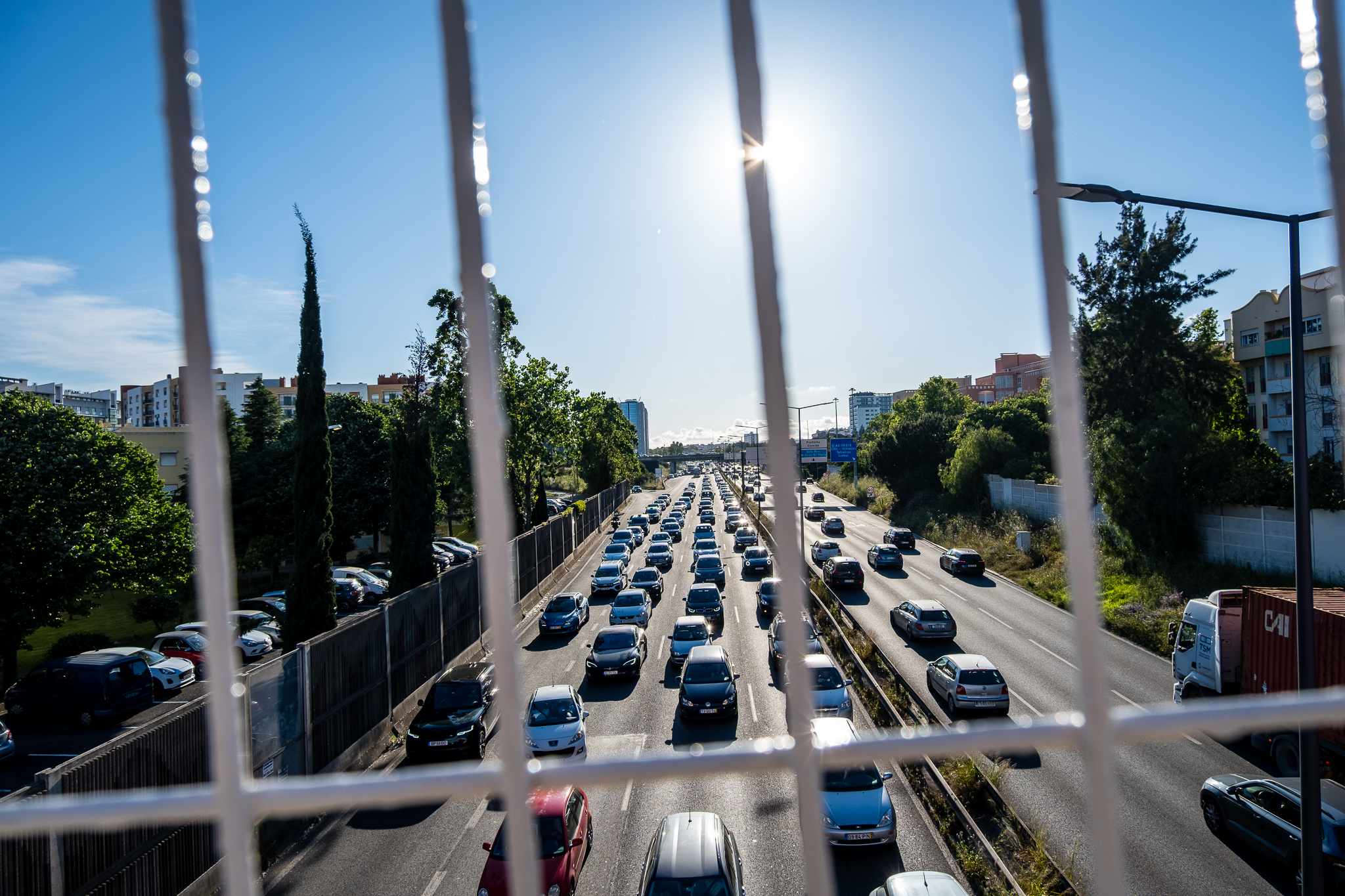The meeting, which took place this Monday afternoon, was part of the participative process that the Lisbon City Hall has underway to requalify the entire Almirante Reis axis, and served to frame the audience present in relation to the challenges and objectives of this project.

This Monday, at the end of the day, the conference that marks the official kick-off of the new participatory process on the future of Avenida Almirante Reis and its surroundings. This time, the theme is not the bike path, but the whole public space of the whole axis, from Areeiro to Martim Moniz. And so, the central theme of the conference, which gathered a hundred people at Lisboa Ginásio Clube, was no longer the controversial bike path.
"We are talking about an integrated project of requalification of the Almirante Reis axis, not just the avenue"Joana Almeida, councilor for Urbanism, pointed out at the opening of the conference. "The fact that it is an integrated project is very important"he added, explaining that this work crosses different municipal departments, such as Urbanism, Mobility and Environment. The expectation is that starting in 2025, with the drainage works concluded, it will be possible to move forward with the requalification works, carrying out until then all the study work, project preparation and contracting that needs to be done.
The participative process about the Almirante Reis axis has been going on since April and should last until June, and, according to the Alderman of Urbanism, "has had quite a following". While the population is listened to with different actionsThe Lisbon City Hall services are studying the whole area of the Almirante Reis axis and its surroundings - 278 hectares, of which only 1.3 hectares will be effectively requalified. "The fact that we have an intervention in one axis does not mean that we can stop considering the surroundings, especially talking about mobility"explained Joana Almeida.
The municipality's study is being divided by sector (sanitation, green structure, urban waste, public lighting, accessibility, sidewalks, mobility, etc? "objectives and constraints report"which, together with the final report of the public participation, will allow "designing our intervention program". The integrated project will affect only the public space, "from facade to facade" of the avenue, and not the built heritage. "Obviously, what is done in the buildings is related to the use of the public space, and vice-versa. The whole component of the built heritage, of commercial activity and housing will be analyzed, but the integrated intervention project is limited to the public space.clarified Joana Almeida.
The conference panel included experts from different areas, and sought to frame the population in the challenges of the Almirante Reis axis and the general objectives already defined for the intervention. Moderated by journalist Ana Fernandes, from Público, the debate panel had Filipa Ramalheteanthropologist, professor at Universidade Autónoma and author of the book Atlas Almirante Reis (2020); Catarina FreitasMunicipal Director of the Environment; Filipe MouraHe is a professor at the Instituto Superior Técnico and an expert in urban mobility and active mobility; João Nuneslandscape architect at the PROAP atelier; and Mário AlvesHe is a mobility consultant and secretary-general of the International Federation of Pedestrians.
"Public space is not elastic but it is dynamic"
Filipa Ramalhete welcomed the existence of a website for the participatory process with documents being made available as they are made. "In academia, making documents available is something we are always claiming. Many times we are told they are doing the study, then we never see the study or we see it at a late time."she said. For the anthropologist, despite "already have a general perception of what is good and what is not" in the Almirante Reis axis, "this is the opportune time to ask questions" and question, for example, what uses are intended for the avenue. "The avenue is very long and maybe not everything is possible in all parts and we also have to ask what is essential to keep and what can be taken away. Sometimes I have the feeling that the avenue has things to more"he said, exemplifying with the many and diverse street furniture on the sidewalks.
The avenue is located in a consolidated area of the city and its space cannot be enlarged. This is one of the main constraints for the rethinking of that axis. "but can we still free up space and create other uses than those that are there?"asked Filipa. "Public space is not elastic but it is dynamic, and Almirante Reis has had an admirable capacity - I don't know if it is because of the little attention it has had over these years - to host everything we have in Lisbon, the good things and also the bad things, like the homeless, poverty, prostitution and trafficking"pointed out the anthropologist, who, in her interventions, launched another idea to feed the discussion: "Maybe there are more people crossing the avenue than walking down it."

Filipe Moura He mentioned that it is important to define the function that is intended for Almirante Reis, whether a mobility function or an accessibility function. "Almirante Reis continues to be an important access axis to the city center, with connections to Gago Coutinho and the Segunda Circular. In the PDM, the avenue starts as a higher hierarchy - level 2 - of distribution of the largest internal traffic flows to the municipality, and then moves to level 3 - an axis of local access, in which we transition from a logic of accessibility"he explained. Moura challenged the PDM to clarify the road hierarchy that is intended for the axis, because this will influence decisions such as speed. "The 30 km/h makes perfect sense if we want to have an accessibility function, but if the function is mobility, if it's an outlet, maybe it doesn't make sense. Maybe it makes sense to rethink the hierarchy of Almirante Reis and if we want it to continue to be an axis of entry and exit of the city as it is defined in the PDM".pointed out the technician's teacher.
Filipe launched five challenges. A first on “think about all the transversalsnot only from the pedestrian point of view, but also from the cycling point of view". to create connections with the Almirante Reis corridor. A second for this participatory process and study “identify types of user profiles and your expectations". regarding the future of the axis. "I think we'll find out some interesting things." A third for the phasing and impact of the works is planned in this integrated project, recalling the situation that lasted for several years in the Plaza de Chile. "You also need to think about how the works are done"he said. A room about "make a before and after photograph" of the future requalification in what concerns walking and bicycle use, in order to understand the changes that the works will bring, giving as an example the analysis done in the avenues República and Fontes Pereira de Melo. Finally, Filipe Moura launched an idea: to create flexible public spaces on Almirante Reis. "Could we assign space to one mode at one time of day and another at another time? Could Admiral Reis not be a rigid space throughout the day or throughout the week? How could that complementarity be implemented, given the second-order effects that are sometimes screwed up?"
"The decision to favor car space or parking is a political decision"
João Nunes pointed out the great heterogeneity of the avenue between Areeiro and Martim Moniz, made up of "by different sections" - "for example, the section by the Alameda has nothing to do with the section by the Church of the Angels"; this evidence"must moderate the intention to turn it into a unique object with the same characteristics"mentions. "It is an avenue where it will be difficult to find a common and regular strategy along its entire length. There is also a part of the avenue that contacts other major avenues and another where the automobile is already more bottlenecked." Still, he mentions that there is in Almirante Reis a "very great potential to create something homogeneous in its diversity". John says "in Lisbon there seems to be a trend towards homogeneity". "There is more and more a temptation to turn the city into a generic quality thing, where you lose the ability to work on the detail, to highlight the characteristics of each site"he clarified, giving the example of public lighting, where the tendency is to use the same model of lamp all over the city.
To João Nunes, "cityscapes are our efforts to build our world. I often say that urban landscapes are the faces of communities, that is, people's desires are very much expressed in the landscapes we see". But, "when we find contradictions between the ambitions for the future of the car in cities and the enormous car pressure we see on the streets, it is time to question what has not been done, it is time to have the political courage to take more drastic decisions". The architect has no doubt that "the decision to privilege car space or parking is a political decision, and it is a decision of the utmost importance because it makes the future of a city space addressed in one direction or another. It's not a technical decision. But assuming the privilege of the automobile will have consequences, which will then have to be assumed.".
"When we talk about the quality of life in cities, we have to talk first of all about the environmental quality, the air, the noise, the possibility of being with children in the street. These are not issues for specialists. They are common sense, quite elementary ones for which you don't need specialists."he said. For João Nunes, the requalification of the public space "is the starting point" for the requalification of commerce and heritage. "There's no point in thinking about qualifying the commerce without requalifying the public space." The landscape architect pointed out that it might be interesting to think about this project integrated into spaces such as cafes and other commercial establishments that, not being public spaces, are "open accessibility spaces" e "lateral opportunities". "I think there is a lot of potential even in the relationship of public space with facades and buildings. These complicities work and generally very interesting relationships are generated. The feelings of abandonment are generated because those relationships don't work."

Catarina Freitas said that the response to climate change "depends on all the choices that are made for the public space"so the work of "breaking down some of the silos" that exist in the House and to get different departments talking is positive. "If we want to promote climate regulation in the Almirante Reis axis, we need that goal to be enshrined in the uses of the 25-meter cross-sectional profile of the avenue, if we are going to have more soft modes to the detriment of cars, if we are going to have more trees... We are dependent on that if we want to promote the well-being and quality of life to the people who live and circulate on that avenue"pointed out the Municipal Director of the Environment. Catarina also left a diagnosis: Almirante Reis has 254 trees in its 2.8 km, of which 226 are in the central axis. "Nobody walks on foot on the central axis. We have people walking along the facades with no protection or very little tree protection."
"If we make a good public space, foreign capital buys everything and prices go up"
Mário Alves began by praising the conference. "I think these moments are important for us to tell each other stories, and when we do that, we are political. Mobility is a political problem with political solutions, public space is political. When I talk about political it's not the executive that's there, but the conversations we have, where we all want our parts - pedestrians, loading and unloading, cyclists, motorists - and where we're going to have to talk to reach consensus and a definition of the avenue."he elaborated. Mário has no doubt that "Almirante Reis will depend on what we want for the Baixa and, if we want the Baixa to be a World Heritage Site, we will have to restrict cars. The difficulty lies in how and how to create that consensus"..
Addressing the pedestrian issues, Mário Alves pointed out that the linearity of the avenue "bores the peons"because "we feel longer when we see the end of the avenue in the background" e "the secret to deconstructing this monotony may lie in the avenue's cross connections". "This invention of the zebras, the crosswalks, were a way for the automobile industry to mechanize pedestrian movements. Until the 1920s, 1930s, people would cross the street anywhere. Maybe we need to de-mechanize those crossings.he said, suggesting mixed use or coexistence zones at intersections. Another point raised by Mário was speed. An active advocate of 30 km / h as a standard for cities - with signs of places where you could exceed this limit and that would be exceptions - the consultant said that 30 km / h are "fundamental for the comfort and safety of pedestrians, and to decrease pedestrian collisions". "We can notice that parents, when they go with a child on an avenue at 50 km/h, take it from the side of the facades in fear and don't let go of his hand"he said, referring to the importance of working not only on safety but also on the autonomy of children and young people in public spaces.
Mário said that lowering the speed is also a way to increase road space, since "a car at 50 km/h takes up much more space than a car at 30"It is necessary to consider a greater safety distance between vehicles at higher speeds. "Maybe we can go to this issue to get some space." The expert also raised the issue of loading and unloading, "mentioning that the value of a load and unload is 10 times higher than a car that drives around in the city". "Loading and unloading is of fundamental value to the city and therefore has to be given a higher degree of priority"he said, defending the improvement of conditions for this activity and the creation of a regulation. "Lisbon hasn't had a loading and unloading regulation for decades." In the end, he left a warning: “We also have to be aware that if we make a good public space, foreign capital then buys everything and prices go up. You can't just think about public space. You have to think about the other issues."
The audience was about one hundred people, in an almost full auditorium. Part of the audience consisted of technicians from the Lisbon City Hall itself, from different directorates and departments. The audience had the opportunity to intervene and ask questions in two rounds. Unfortunately, as is the practice in city hall initiatives, there was no online broadcasting of the conference, which could have allowed to expand the event's audience and welcome more participation. "I hope you will continue to stay with us and continue to participate in this work"said Joana Almeida, in her farewell to the meeting. The Councillor for Urban Planning left a challenge for this participation to be "positive": "Let's think about solutions and how we can change things, rather than pointing out problems." The calendar of the participative process about Almirante Reis includes several activities, which can be known here - including an online survey that can be filled out here.

